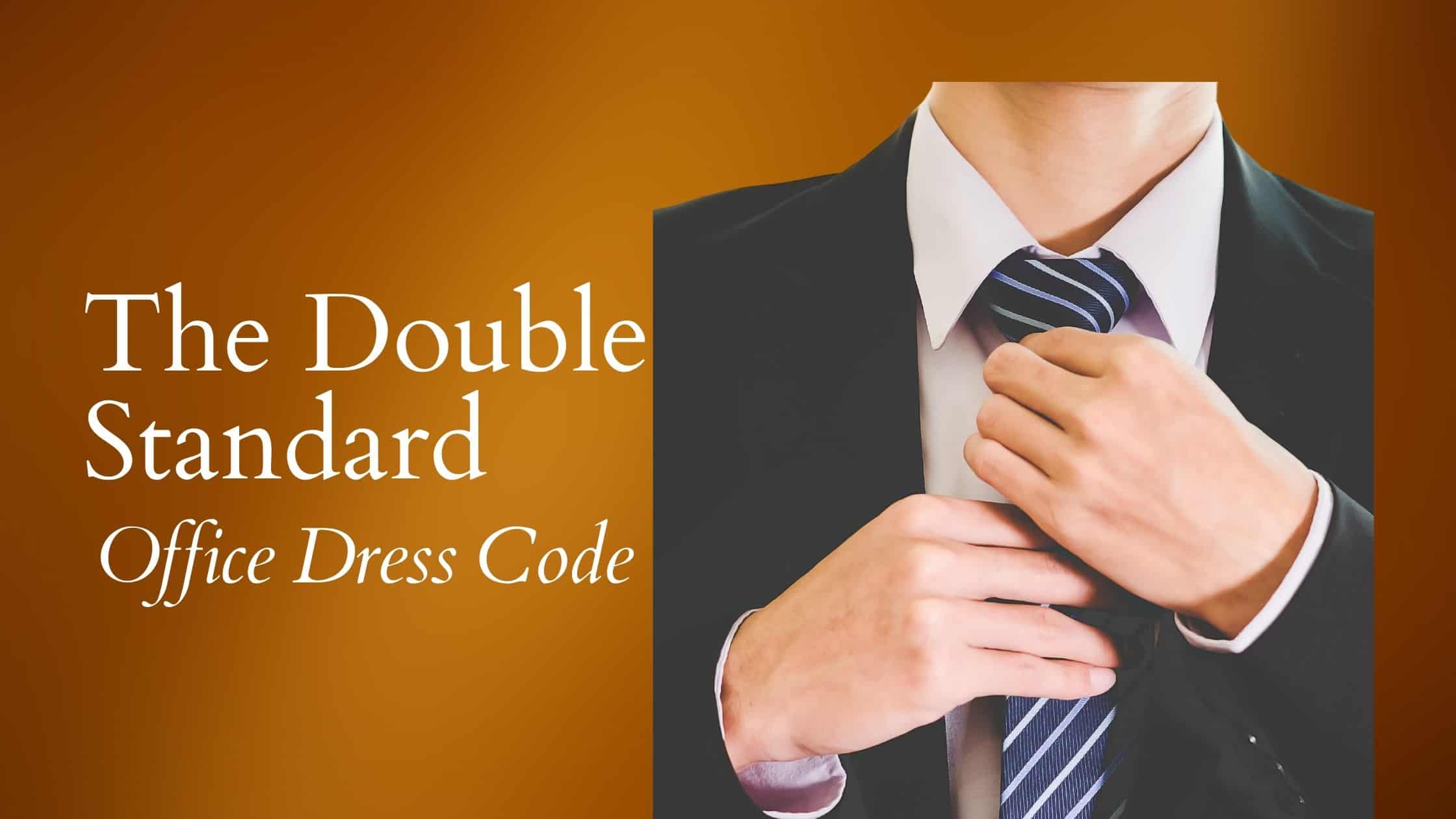The dress code for men in the office is a bit more strict than for women. When HR teams design an employee handbook, they typically break out the dress code by gender. But even with “dress-down Fridays,” men are held to a higher standard of professional attire at work. This blog post will highlight the double standards men face regarding office dress codes.
What is a business dress code, and why do companies have them?
A business dress code is a set of guidelines dictating the appropriate clothing for employees to wear to work. Most companies have them to maintain a professional appearance in the office. By having everyone dress the same, or at least similarly, employers can create a unified and polished look for their company.
What are some typical elements of an office dress code?
There are a few common elements of an office dress code. Most often, employees are expected to wear neat, tidy, and professional clothing. Dress codes might specify clothing such as slacks, khakis, collared shirts, button-up shirts, dress shoes, and skirts below the knee. Some companies have more specific guidelines, while others are more relaxed. But in general, men are held to a higher standard than women when it comes to office attire.
What is the typical office dress code for men?
There is no one-size-fits-all answer to this question, as each organization has its unique dress code. Further, some dress codes are industry-specific, such as banking, attorneys, technology, etc. However, there are some general guidelines that most men must adhere to when dressing for work. Professional attire is typically slacks, khakis, collared shirts, button-up shirts, and dress shoes. Men normally can’t wear capris, hoodies, hats, scarfs, tank tops, or shorts. Additionally, some employers prohibit facial hair and hair below the collar. Moreover, men can’t wear flip-flops or sneakers.
What is the typical office dress code for women?
The typical office dress code for women is pretty simple. The expectation for women is to dress in professional business attire. Typically, this includes skirts, slacks, and dresses. Women are also advised to wear button-down shirts and blazers. Tops should be neat, and skirts should be at or below the knee. Women can wear heels, sandals, loafers, or flats for shoes. Additionally, they can wear jewelry loosely defined as “minimal.”
Where is the double standard for men’s office dress codes?
I’m glad you asked. When reading the typical dress codes, I’m sure you are wondering about the double standard for men. Rarely does HR enforce the skirt below the knee rule. Neither have the 3-inch heel policy. Of course, minimal jewelry is in the eye of the beholder, but I’ve certainly heard my fair share of bracelets distractedly rattling around. Here are the top examples of office dress code double standards for men:
- Women can wear tank tops if they call them sleeveless.
- Women can wear flip-flops with a flower glued on them and call them sandals.
- Women’s office dress codes allow open-toed shoes if they have a heel.
- Women can have random hair coloring and cuts.
- They can wear shorts that look like a skirt.
- Women can wear hats.
- Women’s dress codes usually allow a form-fitting clothes that expose part of their chest. Remember camisoles?
- Women can wear earrings and other piercings, including on their fingernails.
- Women’s office dress codes allow for super tight leggings that no one should wear anywhere.
- Women can wear their hair messy, haphazardly pulled back into a ponytail.
Men have a higher standard placed on them regarding their appearance. They are expected to be well-groomed and have a clean shave. If they have facial hair it must be neatly trimmed. In addition, men have to wear business attire even on casual days, while women can get away with wearing jeans and t-shirts. And for those male employees who want to dress down — sorry — there is only one option: khakis or jeans with dress shoes and a button-up shirt or polo (only in the summer.)
Women Don’t Have It Easy Either
While women have more options when it comes to dressing for work, they also face a lot of pressure to dress a certain way. For example, many women feel they need to wear dresses or skirts to be considered professional, even though this is not always the case. And even on dress-down Fridays, women often feel limited in their choices. So it’s essential to be aware of the double standard that women face when it comes to office dress codes.
Additionally, the pressure to wear makeup at work can be intense for women. Society has set the expectation that they need to wear makeup to be professional and polished-looking. This unwritten rule can be very stressful and overwhelming for women.
Furthermore, women are constantly faced with a common question regarding how to dress for work, “should I dress down to avoid being seen as a stiff and un-fun person, or do I want to dress up because that’s the only way people will treat me with respect?”
In a 2016 study on how men and women are rewarded for attractiveness in the workplace, they found attractive men and women make 20 percent more than their less attractive counterparts. For women, their perceived attractiveness is based on grooming, like hairstyle, makeup, fitness, and clothing. For men, however, grooming counts far less. If they are attractive, they are rewarded whether they are well-groomed or not.
Dress for success. Dress for the job you want, not the job you have. Show up to work dressed one level above where you are. You can have anything you want as long as you dress for it. There are so many quotes on workplace dress codes. These quotes paint the illusion that your appearance matters above all else. Shouldn’t success come from your objectives and key results?
Last updated on January 15th, 2022 at 07:19 am


